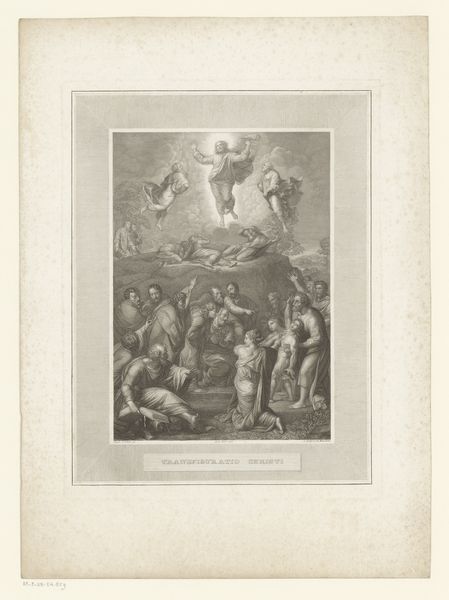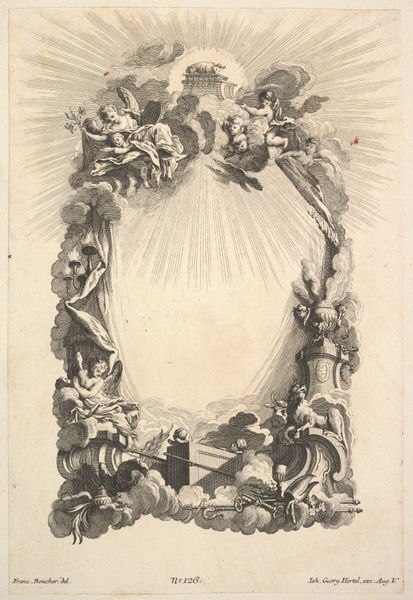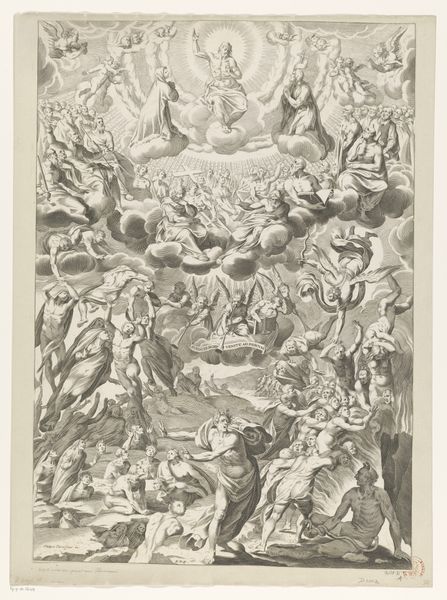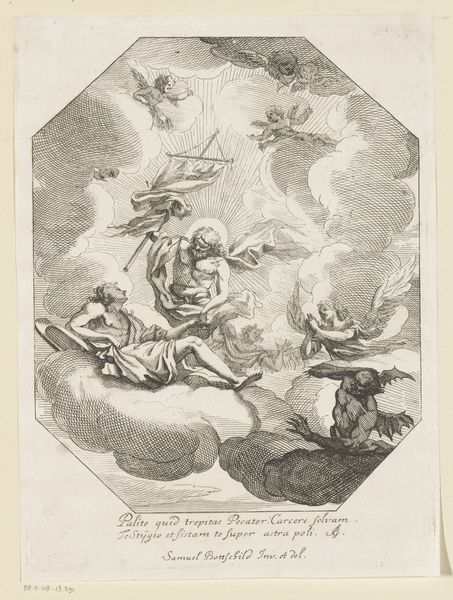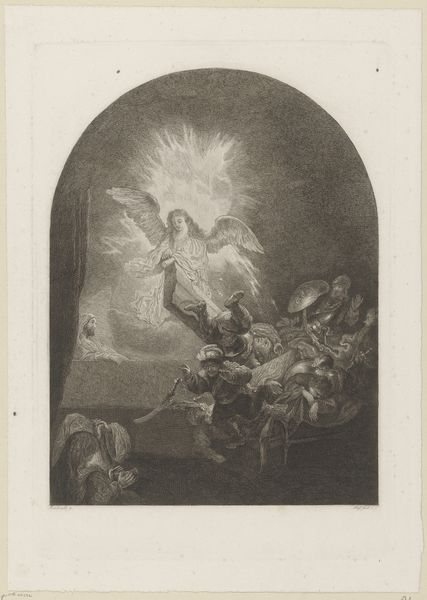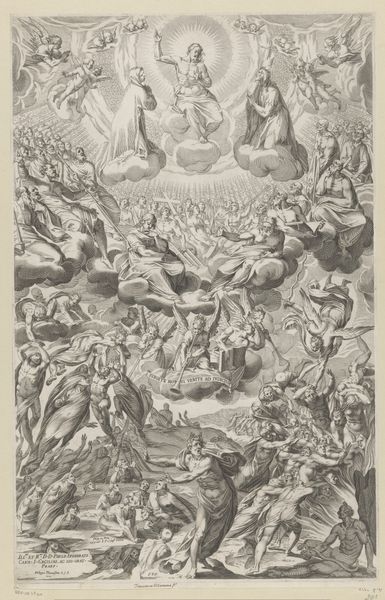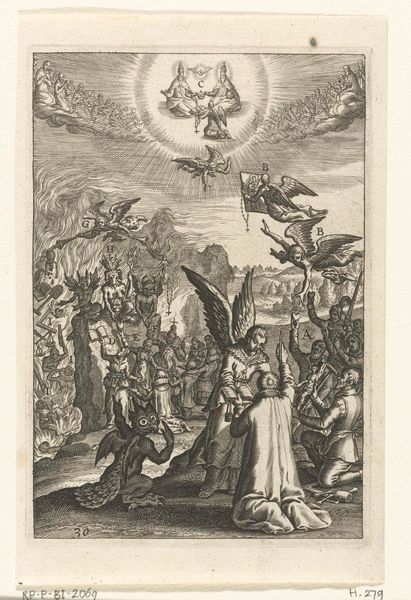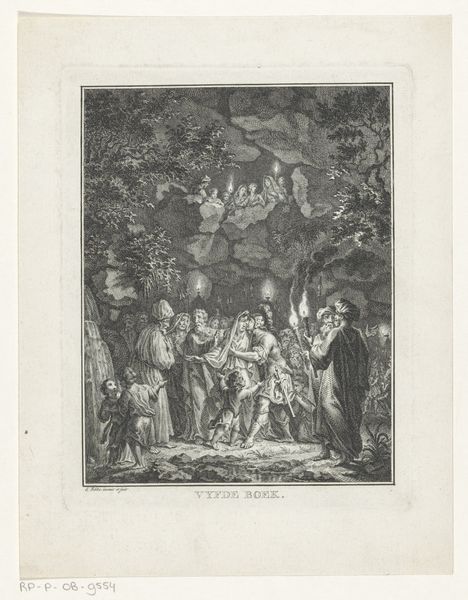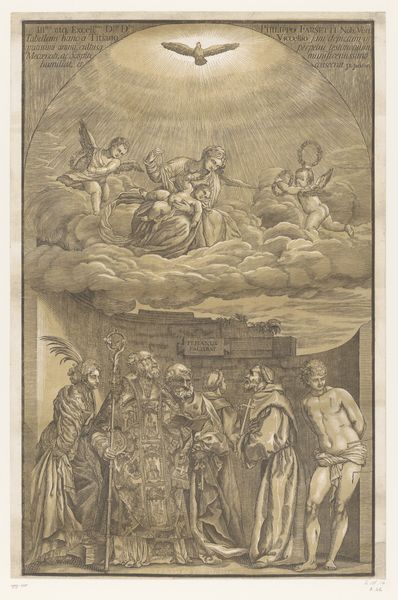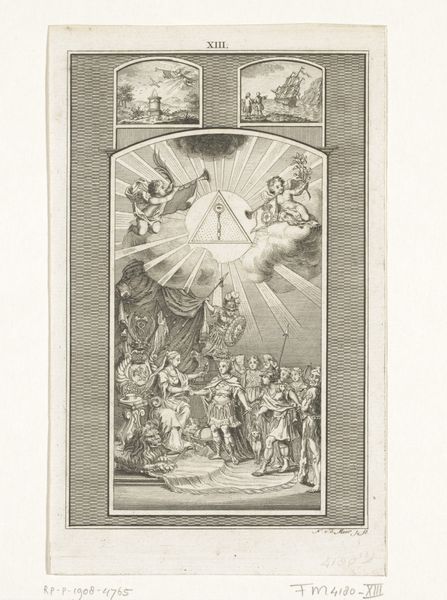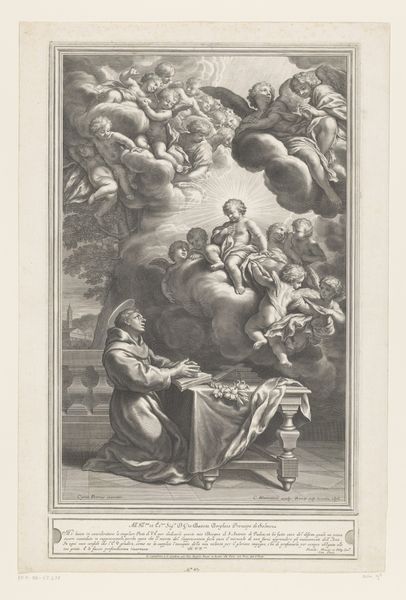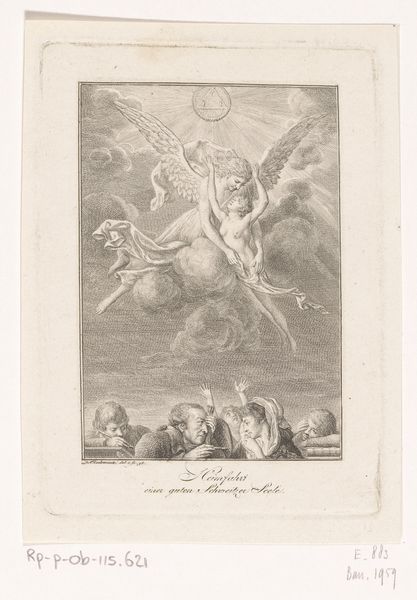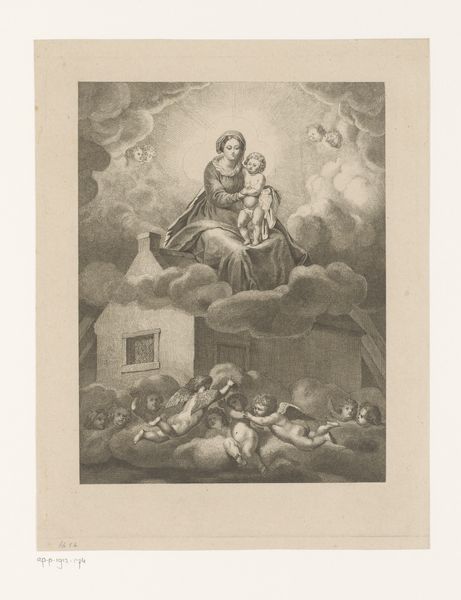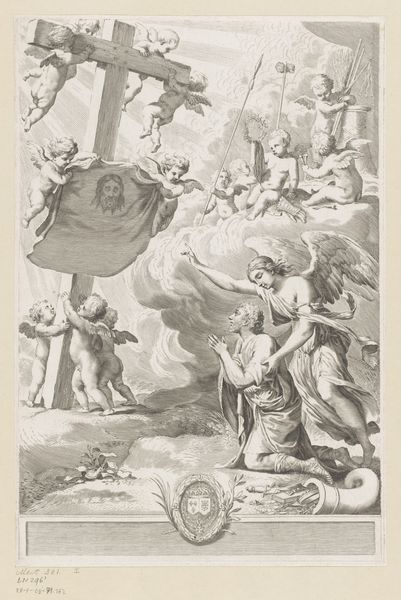
Dimensions: height 593 mm, width 442 mm
Copyright: Rijks Museum: Open Domain
Editor: This is Carl Federle’s "Allegorie op de Vierzehnheiligen basiliek", an engraving from the 1850s. It’s such a layered composition, almost dreamlike. What catches your eye in this print? Curator: The print is clearly divided between divine aspiration and earthly labor. Observe how the meticulous engraving technique creates stark contrasts, reflecting a deep investment in the production and reproduction of this imagery. This wasn’t a quick sketch but a crafted item likely destined for wide consumption. Consider how the depiction of angels differs in detail and execution from the rendering of the shepherds below. Editor: So, it’s not just about the religious narrative, but about who is consuming the narrative and how it was made available to them? Curator: Precisely. The means of its creation—engraving, a replicable method—democratized access to this religious symbolism. How do the differing levels of finish, the ‘polish’ if you will, contribute to a social hierarchy depicted in the piece and mirrored in the process of production? Look at the clothing of the laborers and consider their societal position, versus the figures in the heavens. Editor: I see what you mean. The detailed celestial figures are definitely "higher" both literally and figuratively. This focus on the materials and methods opens up a whole new way of looking at it. Curator: Exactly! The choice of engraving itself becomes part of the narrative, reflecting the era's understanding of mass production and its relationship to art, labor and spirituality. A print, bought perhaps inexpensively, brought this image to homes, a new material relationship. Editor: Thanks, it’s fascinating to consider this work not just as an artistic statement but as a cultural artifact, shaped by and shaping the material conditions of its time. Curator: And how that artifact becomes a marker of value, social aspiration. Fascinating indeed.
Comments
No comments
Be the first to comment and join the conversation on the ultimate creative platform.
